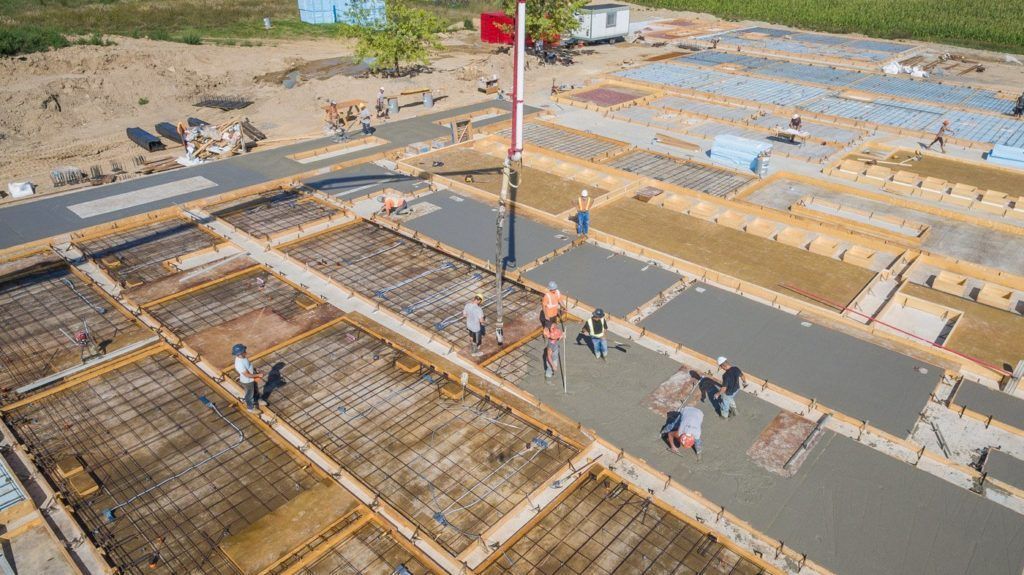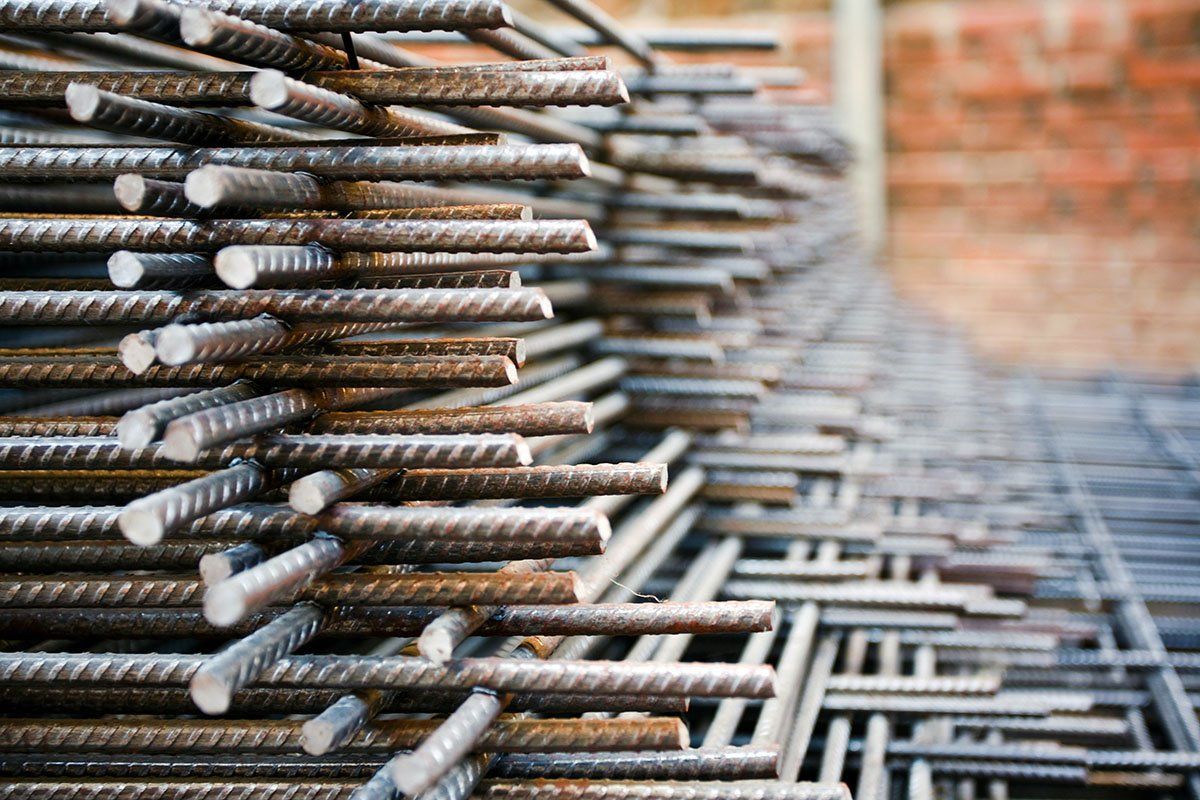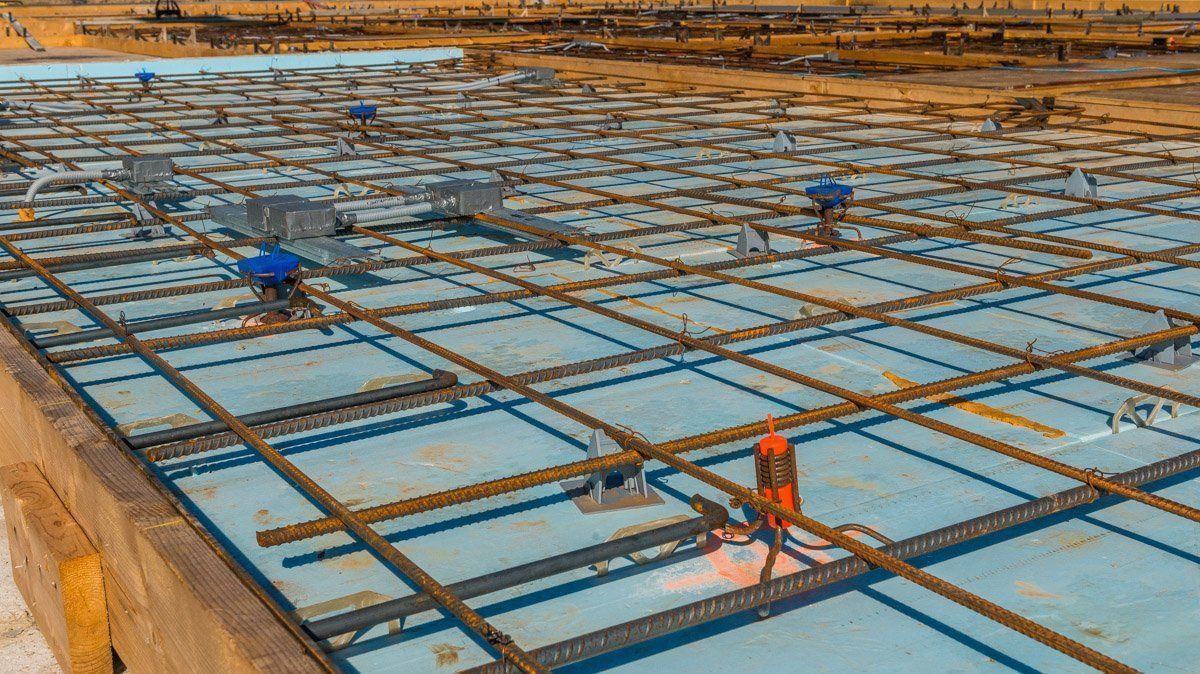The Technical Aspect of Tilt-Up Concrete Reinforcement

Tilt-up construction is well known as a preferred building method for warehouses and big-box stores, but thanks to its economy, simplicity, and durability it is now becoming the method of choice for other commercial projects including schools, churches, and office buildings.
These types of projects are a great way to showcase tilt-ups architectural versatility, but they also increase the importance of keeping concrete cracking in the site-cast wall panels to a minimum.
Two Types of Tensile Cracks
When compared to conventional concrete construction many of the unique features of tilt-up panel construction reduce the potential for cracking. However, there are still some special things that need to be considered:
Construction Related Cracking – The greatest potential for cracking occurs during the lifting of the concrete wall panels – when they are ‘tilted’ from a horizontal to vertical position.
Shrinkage Cracking – This type of cracking is caused by the shrinkage that happens when moisture evaporates from the concrete slabs, a natural occurrence that must be taken into consideration.
While the quality of the concrete used is important, tilt-up panels are also reinforced using steel components which provide greater structural integrity and minimize the potential for cracks.
Steel Bar Reinforcement
Reinforcing steel bars are commonly used to give tilt-up concrete panels additional structural integrity over the course of their service life, and to help them resist the stresses of lifting and bracing. This is because steel has a higher tensile capacity than concrete and is able to withstand tensile forces from applied loads and shrinkage.
Most concrete panels contain both vertical and horizontal steel reinforcement bars. Vertical bars are located close to the centre of the panel, with horizontal bars placed on top.
Additional steel reinforcement bars can be used in areas that require greater reinforcement, such as alongside openings or at points of concentrated loads.
Steel bar reinforcement offers other benefits, including having similar thermal properties to concrete, the ability to withstand high temperatures (including fire), and the ability to be bent after being manufactured. In addition, reinforcing steel is compatible with concrete and does not need to be tied directly to the formwork. Finally, steel bars are readily available.
Steel reinforcement consisting of 10 M, 15 M, or 20 M bars are typically used, while steel reinforcement of 25 M or greater is not recommended in tilt-up panels.
In addition, steel bar reinforcement should meet the standard specification based on requirements of ASTM A615 Grade 60, having a minimum yield strength of 60,000 psi (420 MPa).
Weldability of Steel Reinforcement
Welding of steel bar reinforcement is not generally recommended for tilt-up construction.
If a detail calls for welding of ASTM A615 Grade 60 reinforcement, the process requires a chemical analysis of the steel, a written welding procedure and controlled preheating.
If weldability is desired, a more appropriate choice would be ASTM A706 Grade 60 reinforcement – a specification that provides for restrictive mechanical properties as well as a chemical composition to enhance its weldability.
However, steel reinforcement that meets ASTM A706 specifications is not readily available in all areas, or may only be available in large quantities.
Welded Reinforcement Mats
Welded reinforcement mats are beginning to be used to supplement or replace traditional steel reinforcement bars in tilt-up construction. When this reinforcement method is chosen, the wire size is selected according to the minimum required steel, and conventional bars are then added for additional reinforcement where necessary.
The exterior wythe of insulated concrete sandwich panels is often specified as 152×152 MW18.7/18.7. The structural engineer will determine the size, configuration, type and location of reinforcement. It is also important to note that since steel has a higher yield strength, the area of steel cannot be reduced in every panel.
Reinforcement mats generally provide higher yield strengths and lower placement costs, but they generally cost more per pound.
Steel Bar Supports
Steel bar supports – commonly called chairs – are used to properly structure the steel reinforcement. Bar supports can be made from plastic, steel, or steel with epoxy – including coated tips or steel with pressed foam tips.
The type of bar support used is determined by its location, as each bar type works slightly differently with each reinforcement.
When plastic bar support profiles are used, it’s important to ensure that the profile will allow enough concrete to cover the tip of the support in order to prevent breakage during thermal cycles. This is because plastic cannot absorb moisture, which could result in swelling and shrinking.
If welded reinforcement mats are being used, they should be connected to bolster chairs which offer many support points. The perpendicular spacing of supports must be taken into consideration.
Whichever bar supports are chosen, they must be able to endure heat and ultraviolet rays, as well as the weight of workers and steel reinforcement mats. In some cases, it may be necessary to lay down thin steel sheets in order to withstand the load.
This article is only a brief overview of how steel reinforcements are used in tilt-up construction. To learn more, contact our team at Tiltwall Ontario.



